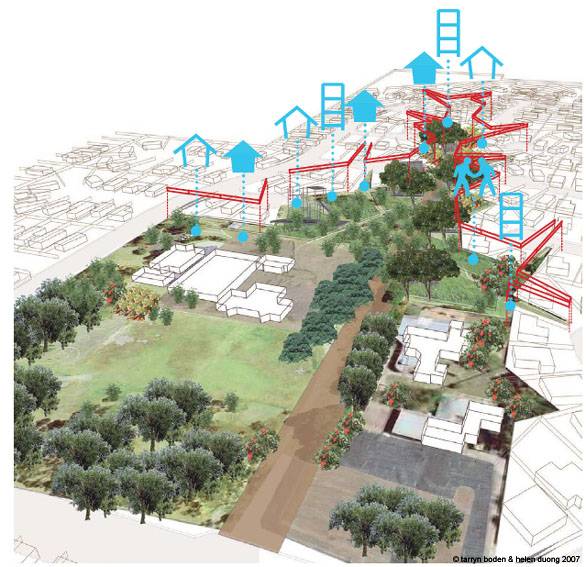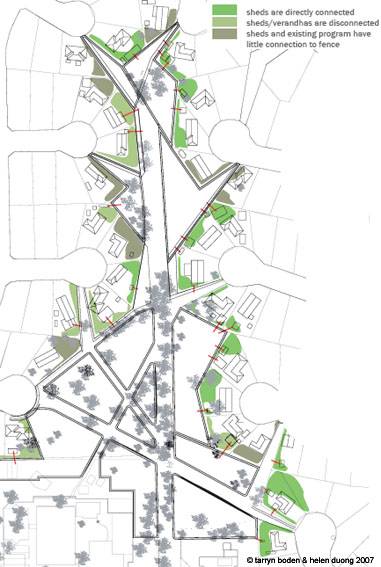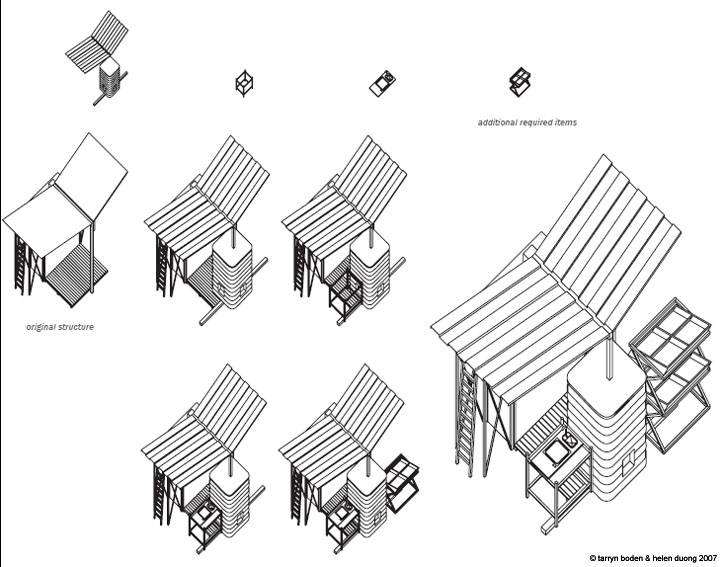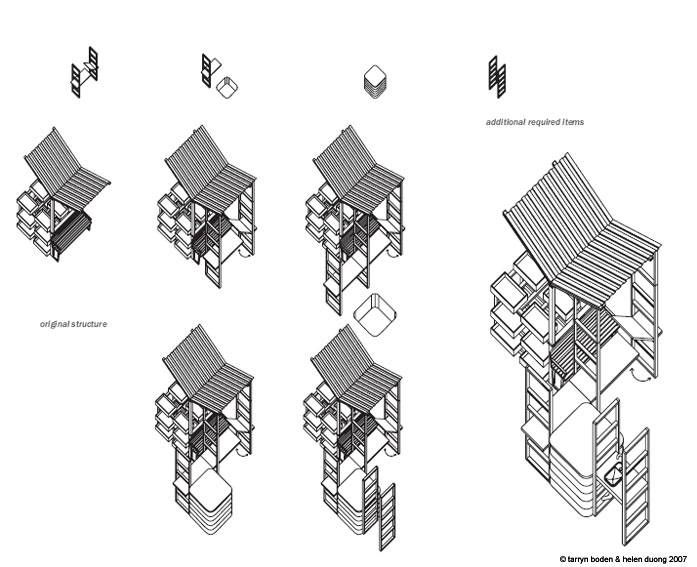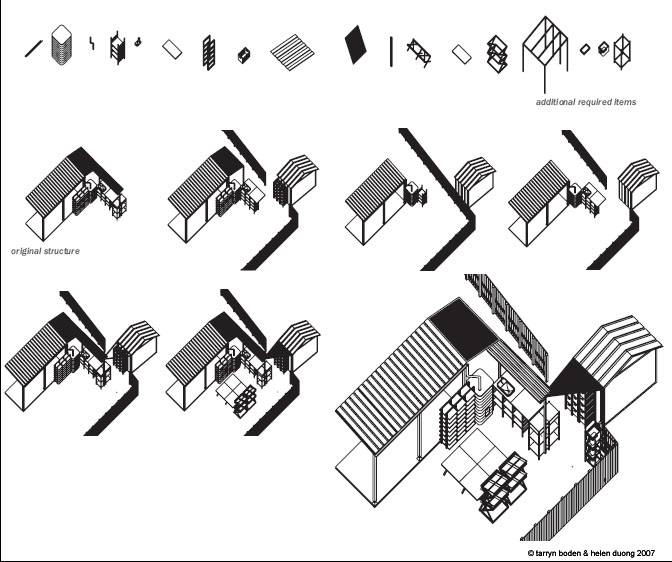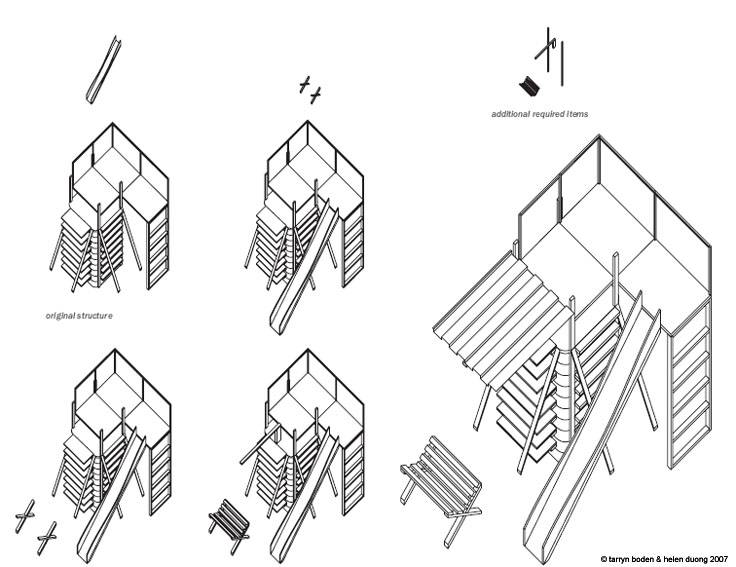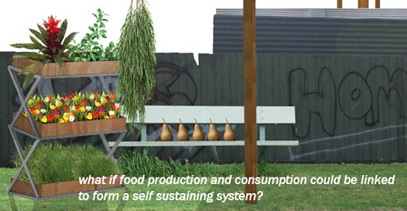Production Net
Existing and adapted structures become sites of sharing local produce and knowledge.
Production Net responds to a need for infrastructure that promotes and supports local food production and consumption. A comprehensive investigation of Hastings’ existing food systems probed how the area might support local food production, and included mapping the vacant and public land scattered throughout the area. As a result, a number of different models were proposed. They ranged from backyard production (private) to more hybrid versions such as food gardens extending into parkland, and the temporary use of vacant commercial blocks for community gardens. The nature of public and private space was explored through the creation of localised food systems and adaptable public infrastructure.
A series of architectural solutions were designed to encourage residents to feel more ownership of public spaces, generating the incentives to maintain gardens and promote sociability through a more active use of public infrastructure. Instead of separating public and private spaces, barriers such as fences become interesting places for more public activity, encouraging a sense of community whilst becoming produce-exchange sites between growers and consumers.
The design lends itself to models of local consumption such as the fruit and vegetable stands often seen outside farm gates and the unique types of ‘light’ infrastructure seen in national parks. The structures are lightweight, mobile and adaptable, able to be moved and changed upon demand. Senior high school students (VCAL) are trained construction and management of the building process and the new local food system. The design promotes social and economic sustainability through social inclusion, increasing local activities, building job skills and encouraging a local industry and economy.
Designer
Tarryn Boden & Helen Duong
University
RMIT
Domain
Architecture
Studio
Studio Leader
Melanie Dodd

